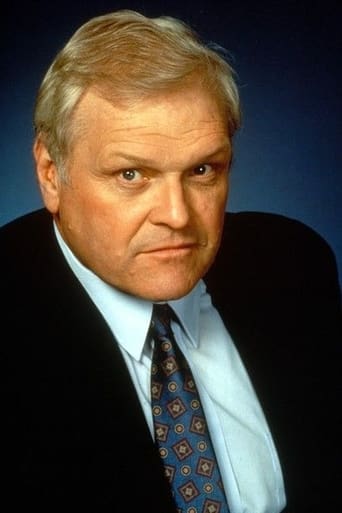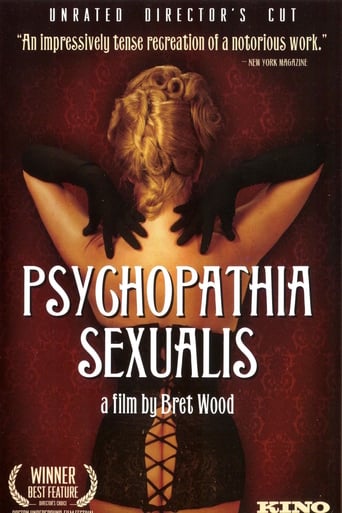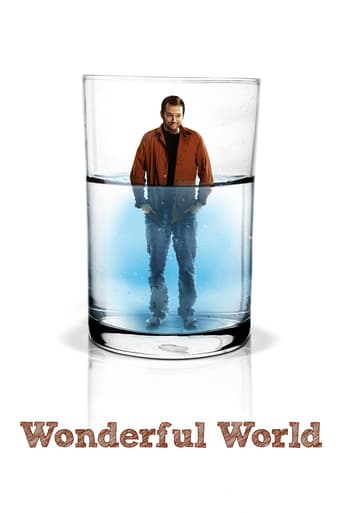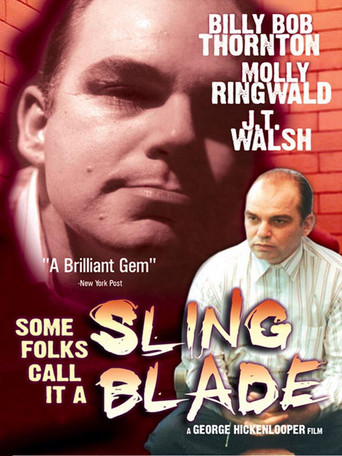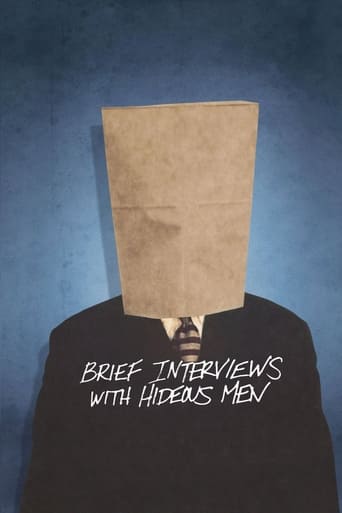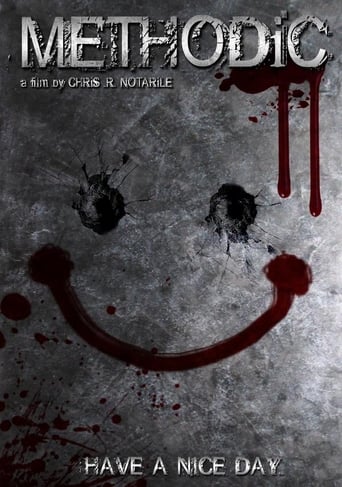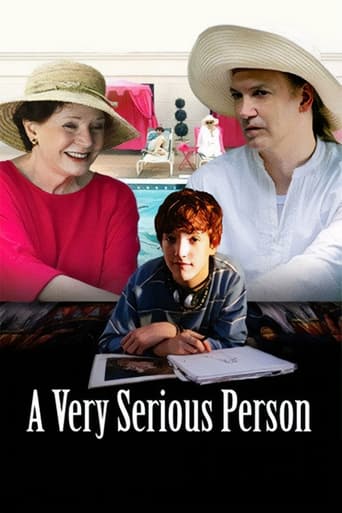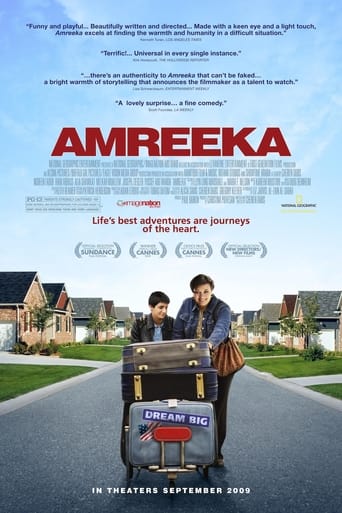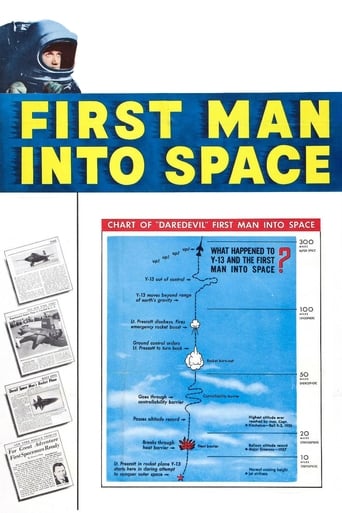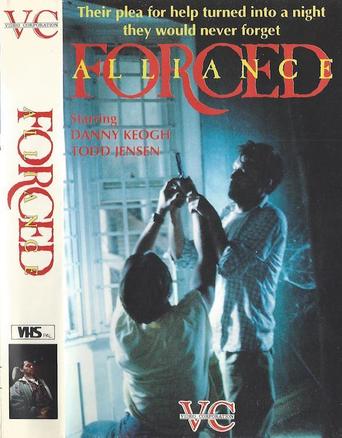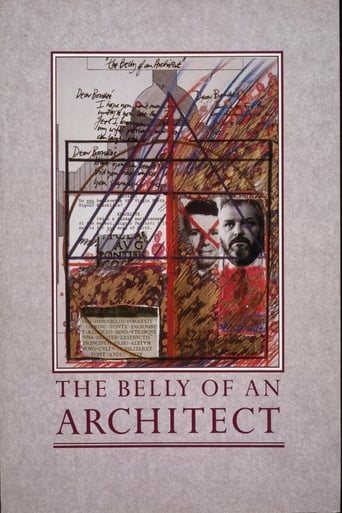
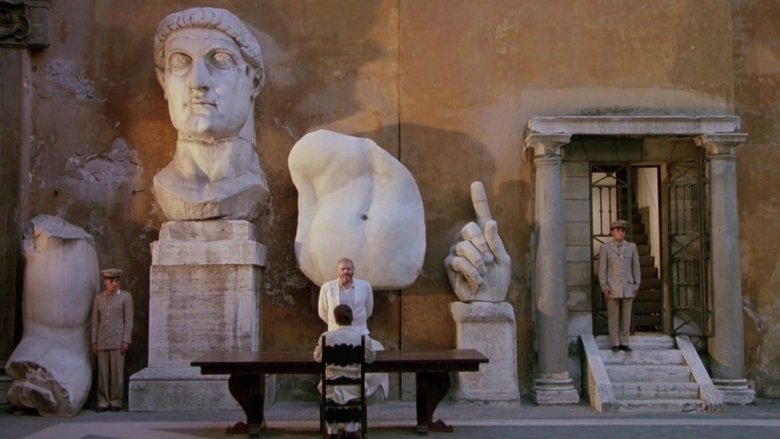
The Belly of an Architect (1987)
The American architect Kracklite arrives in Italy, supervising an exhibiton for a French architect, Boullée, famous for his oval structures. Tirelessly dedicated to the project, Kracklite's marriage quickly dissolves along with his health.
Watch Trailer
Cast


Similar titles
Reviews
It is a crying shame that not many amusing films about human anatomy have been made.British film "Belly of an architect" fills this artistic vacuum by being an outstanding film about architecture,belly and infidelity.In some ways,British cinema author Peter Greenaway must be hailed as a genius director especially for the manner in which he has linked a part of human body with a creative art.His film is a vivid description of an artist's progressive descent into hell.This is one of the most important parts played by American actor Brian Dennehy.While watching this film,it can be surmised that some of the viewers would surely be tempted to link hypochondria with an artist's descent into hell.However, dedicated viewers would be surprised to learn that Hypochondria is not this film's main theme.This is a film about boredom,infidelity and general nature of uselessness.This is a film to watch if one wishes to explore richness of British cinema especially films directed by Peter Greenaway.There is really good photography by veteran French DOP Sacha Vierney.Peter Greenaway has also shown some good views of Rome.This might help viewers to ascertain how Italians view art and American people.From a bored housewife's point this is a film in which no one opts for a direct killing.This is the reasons why strange conditions are created in such a manner that people automatically get frustrated and decide to kill themselves.
It was a shock for me to discover having watched several of Peter Greenaway's films, and having loved many, that this for me, is easily his best from what I've seen. I will temper that by saying that I saw this in the cinema, and the cinema does wonders for many films. I find Greenaway's Baby of Macon, for example, has too much detail and visual complexity to be particularly accessible via home viewing. Greenaway has indeed been criticised for an overly painterly approach to detail in his films, which some deem not fit for a medium with a moving image. His long time collaborator cinematographer Sacha Vierny for example considered Prospero's Books a failure for the over-cluttering with visual detail that was cinematically indigestible.The late Sacha Vierny doesn't get talked about nearly enough, other than Belly and most of the famous Greenaway films, he shot Last Year in Marienbad for Resnais, as well as the majority of the famous pre-80s Resnais movies; The Three Crowns of the Sailor, amongst others for Ruiz; Bof Anatomie d'un Livreur for Faraldo, a marvellous though little seen film; Belle de Jour for Bunuel; La Femme Publique and others for Zulawski; as well as collaborations with Chris Marker, Maguerite Duras, and Sally Potter. The critical part he played in these great movies is rarely sung. As Vierny was not interested in fame and rarely gave interviews, how much direction he took and how much of his own artistry he plyed will forever remain an enigma. As with most of this work, The Belly of An Architect is a really great looking film.The story of this film is about an architect played by Brian Dennehy, called Stourley Kracklite, if you can believe such an indigestible name, hinting at gastric stagnancy and duodenal eructations. In consonancy with his name, he spends the movie plagued by sluggish prickly guts. Kracklite has always admired an obscure 18th century French architect called Étienne-Louis Boullée, a real-life architect who was famous more for his astonishing designs than for actual won commissions (this has often been a hazard for architects I believe). Make good use of the internet or your library and look up his magnificently insane design for Newton's tomb, which was never taken up, or his sprawling design for the Bibliothque Nationale. Due to his overreaching ambition he therefore ended up making mostly private homes, and there's only a handful of his built projects left in existence.So Kracklite has finished with making his own buildings, and spent the last ten years of his life planning an exhibition on Boullée to be held in Rome. There are a lot of typical Greenaway features here, obsession with food, cuckoldry, a battle between an older and younger man. Somehow Greenaway managed here to take his usual stuff beyond an academic game to a place where there is mythos, and poesy. Greenaway for me is a director with a deep feeling for lifecycle, he doesn't present children as small adults, or middle aged men as ephebes with jowls and paunches.For me it's a film about lifecycle and meaning, and homage to genius. I just adore it.
Perhaps it is a mid-life crisis and a fear of death that simultaneously hits Chicago architect Stourley Kracklite (Brian Dennehy). He has traveled to Rome to present an elaborate tribute to the French architect Louis Boullee. Kracklite is fifty-four years old, uncertain that he has fulfilled the promise of his youth. He is married to a woman (Chloe Webb) young enough to be his daughter. So when he begins to develop stomach pains (perhaps due to a growing stomach tumor) while working in Rome and gets no satisfaction from doctors, he begins to believe his wife is poisoning him. Furthermore it appears that she is having an affair with an Italian architect named Caspasian (Lambert Wilson) who also desires to take over Kracklite's Boullee project. I think a lot of men in their fifties can identify with these sorts of threats to their well-being and perhaps be unable to tell the real from the unreal.So the human belly is a big deal in this film. At one point Kracklite prints out scores of photocopies of the belly of a Roman statue as if in scrutinizing mass copies of a flat belly he might somehow explain why he is in pain. Or perhaps the flat belly symbolizes his lost youth and the insecure feeling he has about the affection and faithfulness of Louisa, his young wife. Maybe it is even the case that the belly is a euphemistic symbol of something else that is no longer as vital as it once was. When men in their fifties worry about such things they also worry about their ability not just to cut the mustard but the quality of their work. In short, they worry about being superseded. One cannot help but feel in this case that Kracklite's growing paranoia is in part responsible for his declining power. Fear of something may give it strength.As for the way cinematic auteur Peter Greenaway directs this film, I think his intent is to let the film reflect the subject matter in the sense that both are of artistic intent rather than the movie being a commercial enterprise. (That is perhaps an understatement.) He shows the beauty of the architectural ruins of Rome. He thinks in terms of tableaux in wide shots. He picks a backdrop and sets the camera at some distance from the backdrop: Italian ruins, a spacious lobby, expansive steps in front of an impressive building. And then he plays the scene. Unlike most modern directors he mostly eschews close-ups. I'd rather he didn't. The effect is like being in a theater watching a play. There is a certain appropriateness I suppose about this technique since it creates in the viewer a feeling of spying, which is exactly what Kracklite finds himself doing in one scene, looking through a keyhole to see what his wife and Capasian are doing; and Greenaway has us see too, at the same distance.In another sense, there is a studied feel to this movie that suggests something a bit cold like marble which again is appropriate. Yet Brian Dennehy, in an intense, engaging performance, makes us feel for him and his predicament. We understand that he is realizing his mortality and we appreciate that his reaction is understandably confused and frightened. As for his wife, she seems distant not only because of the camera work but perhaps because she is psychologically estranged from her husband and from what he is going through.(Note: Over 500 of my movie reviews are now available in my book "Cut to the Chaise Lounge or I Can't Believe I Swallowed the Remote!" Get it at Amazon!)
Dreamlike, beautifully shot by great Sasha Vernie and equally disturbing (as all Greenaway's movies are), "The Belly of an Architect" (1987) tells the story of an American architect, Stourley Kracklite (Brian Dennehy) who came to Rome to work on the exhibition dedicated to the French architect of the 18th century, Etienne-Louis Boullee (1728 - 1799). Stourley brings with him his much younger wife Louisa with whom is passionately in love. Everything looks good for him he's got a project of his dreams to work on, his wife is with him, and his Italian colleagues seem to be supportive and exited about the exhibit as much as he is. Soon, though, the things begin to change and look rather grim Stourley's pregnant wife enters the affair with a younger man, the work does not move as quickly as it was planned and on the top of all, Stourley gets sick and perhaps more seriously than he thinks.When I watch Peter Greenaway's films, I know they will be a feast for brain, eyes, and ears his films consist of frames so perfectly composed that you want to capture every moment of them and exclaim like Goethe's Faust did, "Stay a while! You are so lovely!". The music in his films matches the visual beauty perfectly, and his outlook at the familiar world is always original and arresting even if it lacks warmth and sentimentality. "The Belly of an Architect" is all that: it is filled with symbolism and references to history, Art, and anatomy. It is also a social satire on difference between cultures but it is a compelling and moving story of one man's descending to chaos, hopelessness, despair, and eventually death. This is the first Greenaway's movie since "The cook, The Thief, His Wife, and Her Lover" that made me feel compassion for its protagonist. I believe it is due to the incredible performance by Brian Dennehy - quite unusual name for a Greenaway's film but was he great as the architect of the title. Dennehy creates a character that is not likable as the film begins but heartbreaking and tragic by the end.8/10


